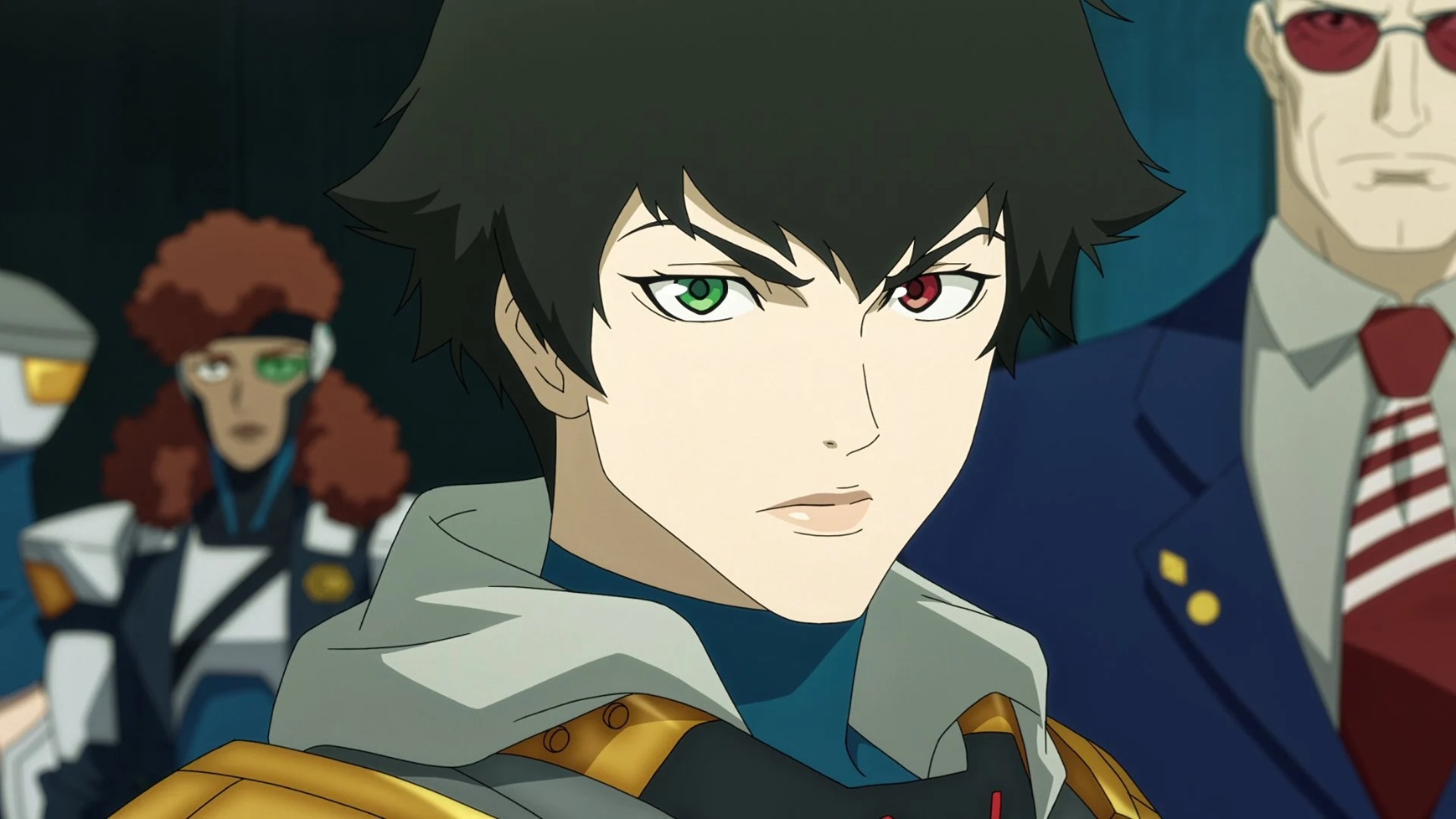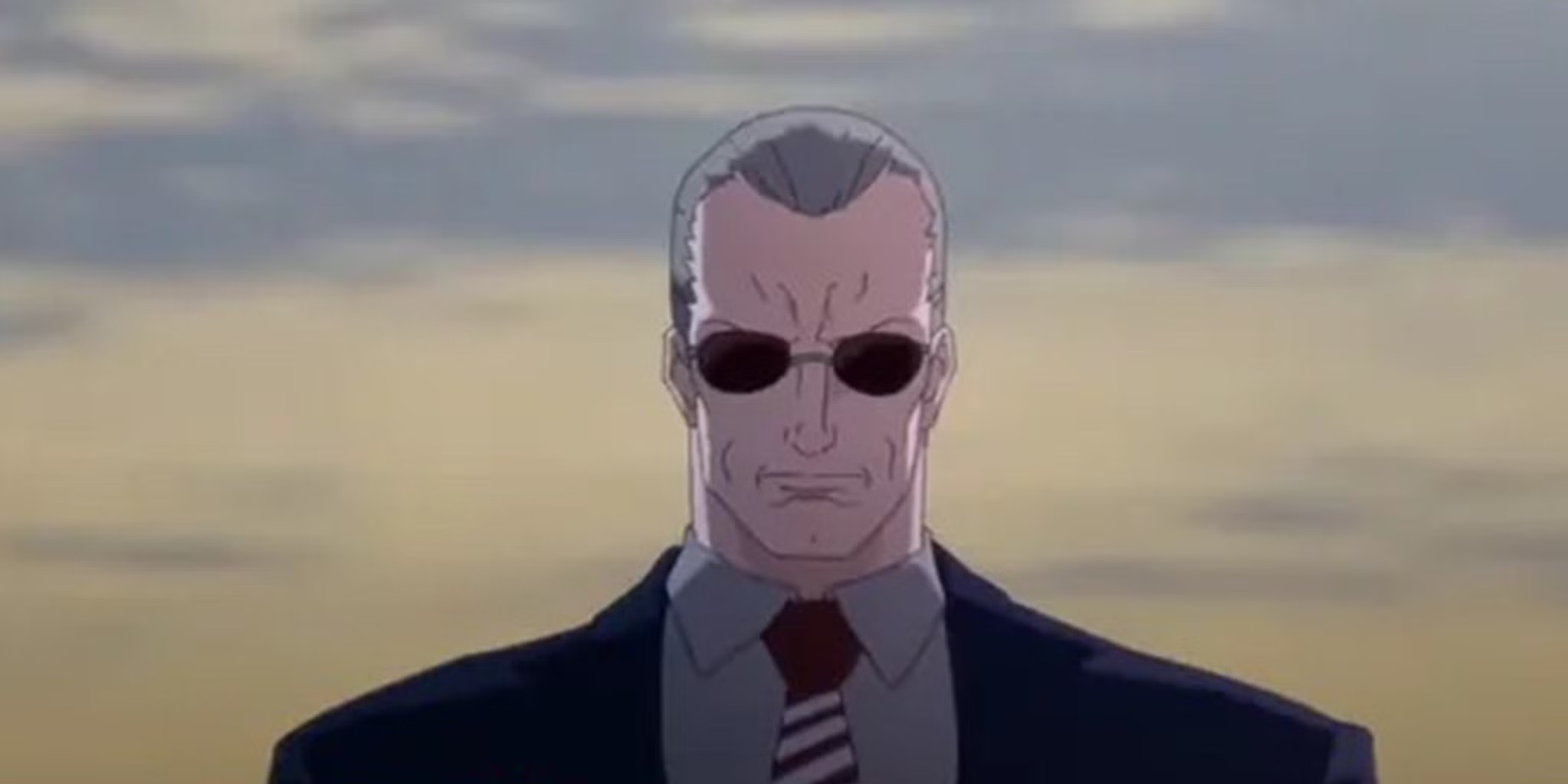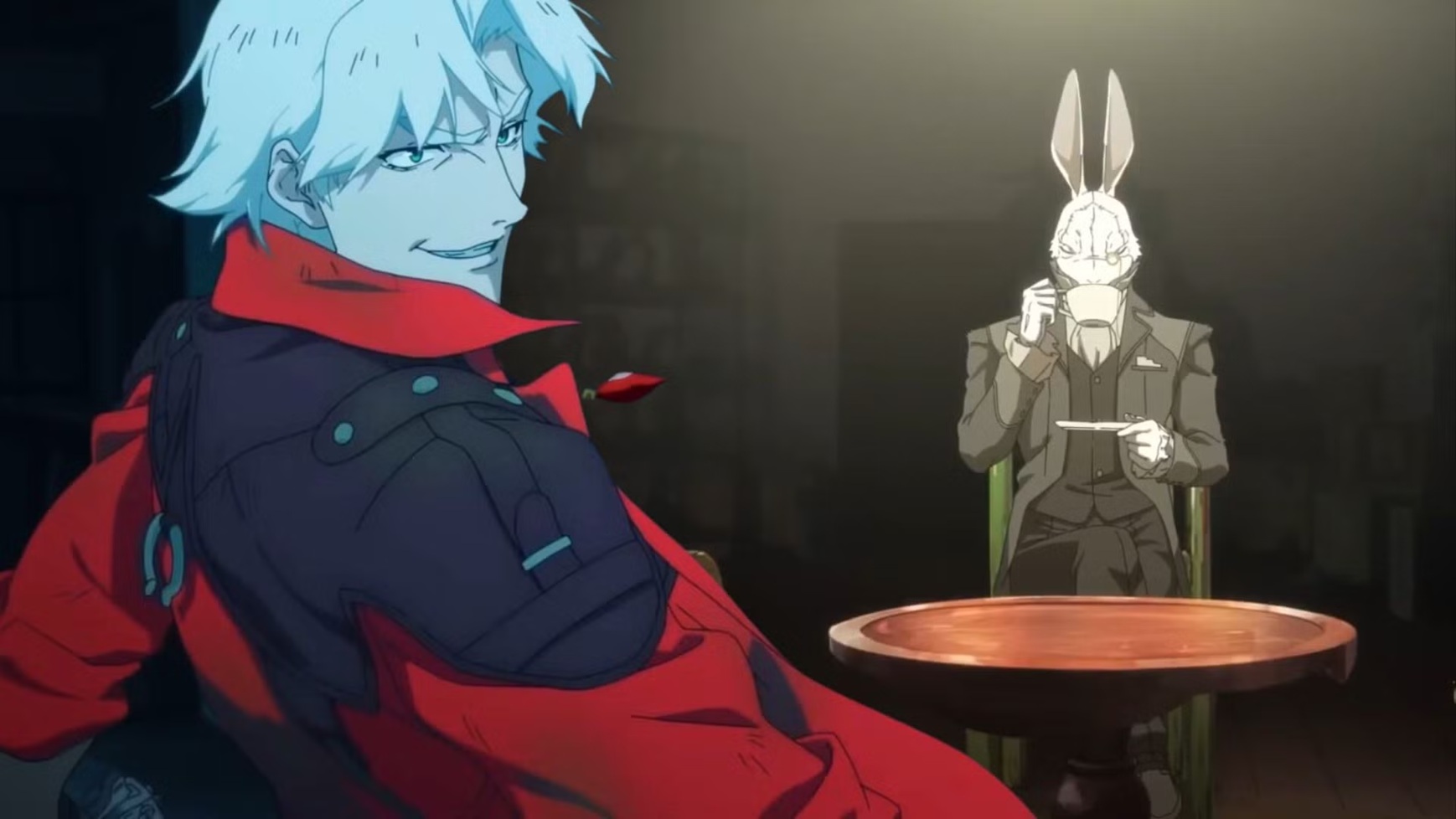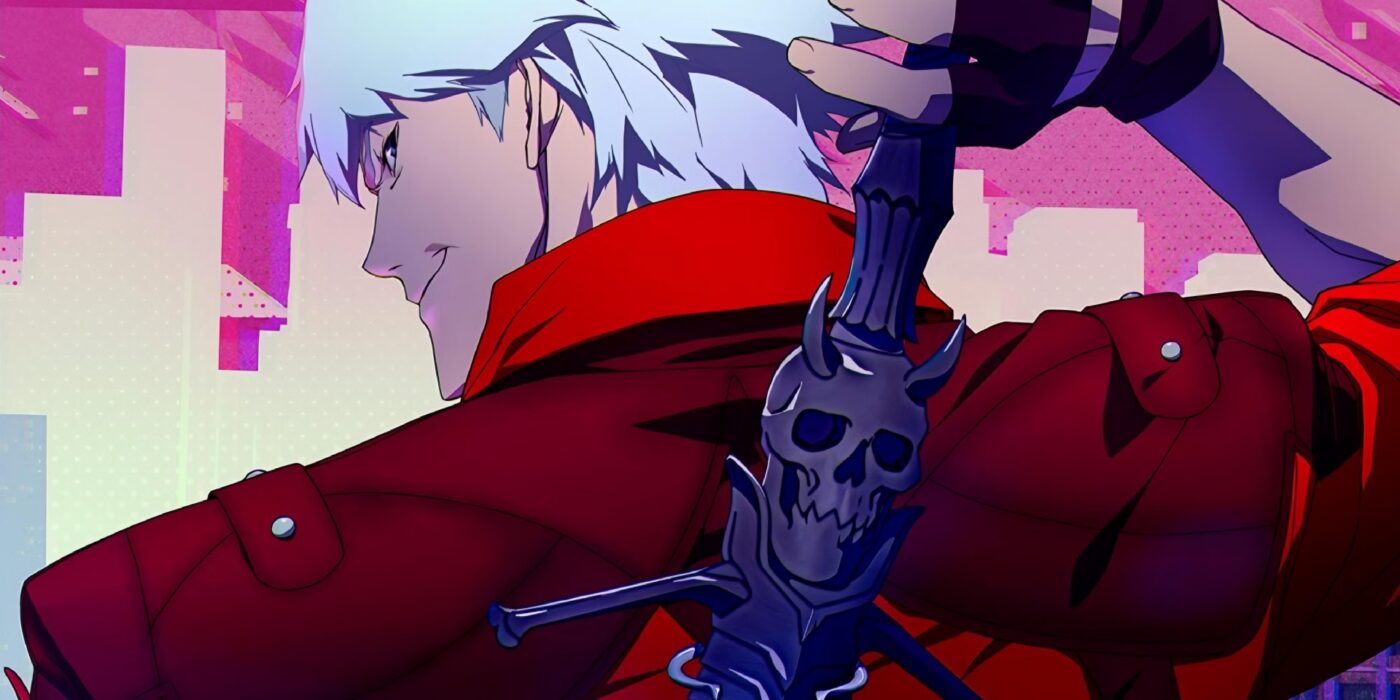Summary
Netflix’s Devil May Cry adaptation remarkably transforms violence into a stylish series with layered characters and political commentary. It starts slowly but rewards viewers with vibrant animation, dynamic combat, and narratives hinting at future developments.
Overall
-
Plot
-
Narrative
-
Acting
-
Characterization
-
Action
-
Visuals
-
Pacing
In an era where video game adaptations have evolved from laughable cash-grabs to legitimate prestige television, Netflix’s latest offering stands at a fascinating crossroads. Devil May Cry emerges as a blood-soaked love letter to early 2000s aesthetics that somehow manages to transcend its source material’s hack-and-slash origins. Created by Adi Shankar, the mastermind behind Castlevania , this series doesn’t immediately showcase its full potential. Instead, it deliberately builds tension through its opening episodes, establishing a world where demons lurk in the shadows of modern society before unleashing a visual and narrative spectacle that rewards patient viewers. By the midpoint, what initially appears to be style over substance transforms into a surprisingly nuanced exploration of humanity’s relationship with the unknown, wrapped in a package of spectacular animation and unflinching violence. Our review of Netflix’s Devil May Cry examines how the show fares as both an anime show and an adaptation.
Based on Capcom’s venerable hack-and-slash franchise of the same name, Devil May Cry begins in a world not dissimilar to ours, with the only key difference being that demons walk among humanity in complete secrecy. While the majority of the United States is blissfully ignorant of this fact, that hasn’t stopped a small contingent of demon hunters from taking on freelance scores for the highest bidder. The most notorious of all these hunters is a gun-slinging, pizza-loving jokester named Dante (voiced by Johnny Yong Bosch ). His life is rudely interrupted when a demonic villain named White Rabbit (Hoon Lee ) steals an ancient artifact, and then Mary (Scout Taylor-Compton ) shows up with DARKCOM, a government anti-demon force, asking Dante to join her on a quest to uncover the mystery behind these escalating demonic threats.
We also follow the White Rabbit, a theatrical, monocle-sporting mastermind who has made it his floppy-eared mission to destroy the mystical barrier separating Earth and a sulphuric realm we think of as Hell. As the series progresses, we discover that the Vice President (the late Kevin Conroy ) may have more sinister motivations than simply protecting humanity from demonic threats. The political undertones become increasingly apparent as the series unfolds, with DARKCOM serving as a clear stand-in for the rampant and government-encouraged Islamophobia of the Bush years, according to creator Adi Shankar , who noted that his take on Devil May Cry “is modeled after my memory of the world pre- and post-9/11.”
There’s an undeniable thrill and excitement in watching a stylish action series with this much visual flair, but for me, it was especially true once Devil May Cry found its footing around episode 6. Like many video game adaptations, this series is ambitious, but it felt like it was less interested in theatrics for its own sake and more invested in telling a story that had meaningful character arcs as well as effective themes. The early episodes suffer from spending too much time on repetitive exposition, explaining the rules and magic system of its world in ways that feel obvious and slow the pacing considerably.
The best animated dramas are rich with character development and plot progression that challenges its protagonists and audience members. Everyone has their own goals and motivations, but often they intersect with other characters’ goals and motivations. Yet, nowadays, most video game adaptations are rarely pure action: rather, they are thrillers or political shows with gaming aesthetics as narrative wallpaper. Devil May Cry also ventures in this direction with its critiques of American imperialism and exceptionalism. However, the series doesn’t struggle to effectively set up a potential second season, even if its last-moment twist was one I could see coming from a mile away.

Devil May Cry has always featured stellar animation, and this series is no different. Studio Mir (who had a hand in the recent X-Men ’97 cartoon) delivers with a pleasingly elastic snap and constantly ground-shattering heft to the action sequences. They have also mastered the art of foreshortened perspective so various characters can strike a badass pose while the barrel of their chosen weapon looms intimidatingly large in the frame. The fight choreography is thoughtfully designed and incredibly bloody, with each episode boasting creative and visceral combat that showcases why Studio Mir has become a go-to for many U.S. animated series with flashy, dynamic 2D action requirements.
Johnny Yong Bosch gets to put a new spin on the classic character of Dante, and Scout Taylor-Compton gets to straddle the line between rigid tactician and reluctant ally at alternating points of the story. Their dynamic creates a sparky push-and-pull, with her by-the-book approach contrasted with Dante’s one-liner cheesiness. She assumes his matador moves and emotional shallowness must be a himbo facade to hide his true soulful self. In one of the show’s best jokes, she’s dead wrong—at least at first, as both characters gain unexpected dimensionality as the tale unfolds.
Hoon Lee is theatrical and menacing as the White Rabbit, establishing him as a true threat to Dante and the wider globe, and he doesn’t waste one second onscreen. Kevin Conroy delivers a brilliant posthumous performance as Vice President Baines, injecting his unparalleled charm into a fascinating depiction of a mysterious and powerful government official. The voice acting throughout is top-notch, bringing these characters to life with nuance and personality that elevates the material.
However, it’s the White Rabbit who gets to deliver the standout performance of this season. In one of the middle episodes, we see the emotional journey we go on with this villain outpace our connection to both Mary and Dante, which is disappointing and an error any additional season needs to correct. His facial expressions and motivations reinforce why he’s one of the more compelling antagonists in recent animated adaptations, a fact that has often been overshadowed by the surrounding flashy action sequences.
The production value of the show is as top-notch as ever. The glorious ’80s/’90s-inspired aesthetic only scratches the surface of the deeper world Devil May Cry takes place in. Both the human world and the demon plane are approached with a remarkable level of detail and nuance that easily sets them apart from other demon-slaying stories that are abundant in other action/comedy/horror hybrids. The result is something far deeper than one would expect from a white-haired punk rocker fighting an evil talking rabbit.
The soundtrack fully embraces the emo tone and horror elements of the story. With Limp Bizkit’s “Rollin'” soundtracking the credits sequence and knowing needle drops from the likes of Linkin Park , Rage Against the Machine , and Green Day’s “American Idiot,” the personality of this adaptation is very turn-of-the-millennium nu-metal. Though the needle drops can lean more into goofy territory than dramatic, this helped me accept the more comedic aspects of the series. The musical choices aren’t draped in layers of irony—Shankar seems to be genuinely fond of the nü-metal and emo of the era, using it to enhance key moments throughout the series. A needle drop of Rage Against The Machine’s “Guerilla Radio” adds extra punch to a fist fight in an apartment; “Last Resort” by Papa Roach slathers gleeful cheese to a Matrix Reloaded -esque freeway chase; and Green Day’s “American Idiot” plays as refugees are indiscriminately bombed in perhaps the show’s most on-the-nose musical choice.

The only place where Devil May Cry stumbles in its story is the allusions to an essential character in Dante’s history. Fans of the games probably already know who this character is, and he has been referenced in the marketing, but given that the character’s role in this inaugural season is rather minimal, that may have been a mistake. This character might have greatly benefited from being kept as a total surprise as opposed to being frequently brought up, only to result in an admittedly predictable twist.
Unlike Castlevania, which was primarily based on Castlevania III: Dracula’s Curse , Devil May Cry isn’t based on a single game from the series, but instead incorporates a wide variety of elements from the entire franchise. The White Rabbit, for example, never actually appeared in any of the games, but instead originates from the manga adaptation of Devil May Cry 3 . Even though it doesn’t directly follow one game beat for beat, Netflix’s Devil May Cry demonstrates a remarkable reverence to the source material when it comes to tone and characters, particularly through some A+ worldbuilding.
Perhaps the show’s best episode, “The First Circle,” makes room for something different, with the French Studio La Cachette (Primal) assisting with production to create a looser style with thicker and more rounded linework. This dialogue-free flashback episode showcases different artistic directions and stands in stark contrast to the anime-esque stylings of Studio Mir. The episode unfolds with minimal exposition, allowing the visuals to tell the story in a way that demonstrates confidence in both the audience and the animators. The deployment of an original Evanescence song during a montage of a family falling apart clearly channels an anime music video from 20 years ago. But this chapter also makes the rest of the series feel less inspired in comparison, highlighting what could have been if the entire show had taken more artistic risks.
Over the course of its eight episodes, Devil May Cry constantly channels the sort of OTT action movies you suspect Dante watches in his messy crash pad between freelance gigs: a highway chase with demons stomping on traffic feels very Matrix Reloaded, while Mary gets a side mission in a run-down apartment block that echoes The Raid or Dredd . Heads are brutally lopped, guts are generously spilled, and despite the freewheeling vibe, the collateral damage slowly but surely rises. The series moves with lightning speed, bouncing from one frenetic fight sequence to another, rarely giving viewers time to dwell on any narrative shortcomings.

The final episode of Devil May Cry leaves viewers with a tantalizing question about the future of this franchise. Where most video game adaptations end their first seasons with clear sequel hooks and unresolved plot threads, Shankar’s creation delivers something more complex – a conclusion that feels simultaneously complete and unfinished. The series subverts expectations by taking its seemingly straightforward demon-hunting premise and evolving it into something far more morally ambiguous. What begins with Dante’s cocky one-liners and flashy combat gradually transforms into a meditation on what separates monsters from men. If Netflix greenlights a second season, the true test will be whether the creative team can maintain this delicate balance between spectacle and substance. The foundation has been expertly laid with rich worldbuilding and visual identity, but the character work – particularly for Dante and Mary – needs significant expansion to elevate this series from good to truly exceptional. The potential is undeniably there, lurking beneath the surface like the demons in its narrative, waiting for the right moment to fully emerge.
Whether you’re a hardcore fan or discovering Dante for the first time, Netflix’s Devil May Cry adaptation is a devilishly good time. It’s so much more than mindless hack and slashing, and despite some pacing issues and character development shortcomings, the series delivers a compelling narrative with stunning animation and a surprising amount of depth. The series is almost successful in restoring the video game adaptation genre to its former lofty heights, and I’m eager to see where it goes next.







